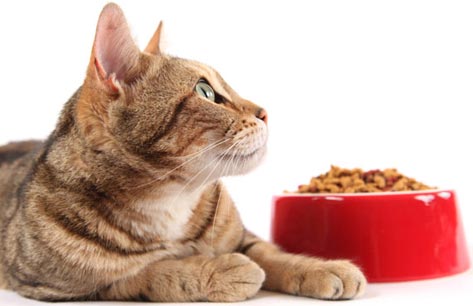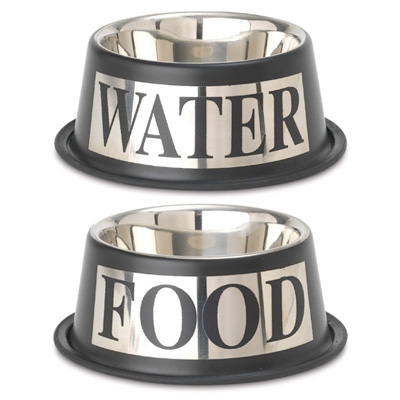
Running an animal center like the CCSPCA requires a supportive staff, dedicated volunteers, and generous donations from the surrounding community. This blog will cover the top ten things an animal shelter uses the most and why each one of these components is essential for running an efficient, effective, and caring animal center.
1. Dog Food 
The CCSPCA houses anywhere from 250 to 500+ animals a day. If you multiply that times 365 days, that’s 91,250 to 182,500 mouths to feed over the course of a year. That’s a lot of mouths to feed! Dogs should eat at least twice a day. Typically a dog eats ¼ cup to 2 cups of food a day, depending on the size of the dog. That’s an average of 94 to 750 cups of food a day which equals to 34,310 to 273,750 cups of dog food for one year! Now that’s quite a bunch of dog food. We use a variety of different dog foods, depending on the age of the dog and if they need a special diet. If we are feeding a puppy, they may require wet food, whereas specific breed of dog may require a gluten free diet.
2. Cat Food 
We need cat food just as much as we need dog food and for the same reasons. We house more than 10,000 cats and kittens every year. Similar to dogs, cats should also eat twice a day. They require ¼ cup of food per feeding, so that’s a ½ cup of food per day. The CCSPCA houses an average of 80 cats per day. If you multiply the amount of food they eat by the number of cats/kittens we house per day it equates to about 40 cups of food each day, which equals 14,600 cups of food per year. That’s a lot of cat food! Between both dog and cat food, our food expense per year is nearly $30,000!
3. Cat Litter 
Cat litter is used on a daily basis at the CCSPCA. Cat litter is ideal for deodorizing litter box smells, clumping urine for easy removal and providing a space for the cat to eliminate itself. The CCSPCA prefers to use cat litter, rather than another product, for several reasons. One, it helps cats/kittens get acclimated to using a litter box before they get adopted. Two, it’s easy to clean up and lastly, it helps to deodorize our cattery.
4. Chlorine Bleach 
We use chlorine bleach to clean and disinfect the kennels, cages, feeding bowl and adoption center. Chlorine bleach has strong bacterial properties, making it popular for cleaning, disinfecting, and controlling bacteria. Bleach quickly reacts with microbial cells to denature and destroy many pathogens. Chlorine Bleach kills 99.9 percent of germs, E. coli, Listeria, Salmonella, Vibro cholera, Staphylococcus aureus (MRSA), influenza, and HIV. Many animals come to the animal center in poor health, malnourished, stressed and without vaccination records. We use chlorine bleach to ensure we don’t spread diseases and germs throughout the stray and adoption departments. For more information about the disinfecting power of bleach, please visit here.
5. Food Bowls/Litter Pans 
We are always in need of food bowls and litter pans. We use food bowls for both food and water. Some of the kennels require more than 2 bowls per kennel, depending on how many animals are occupying the same kennel. Some dogs like to pick up the bowl to play with it. They will toss it around their enclosure, which can damage the bowl. Litter pans are just as important as the food bowls. We use the litter pans for cats, kittens, and sometimes puppies.
6. Office Supplies:
When most people think of what an animal shelter needs they focus on items for the animals, which are definitely  needed. However, to run any business you need office supplies. Paper, pens and pencils, sticky notes, staples, paper clips are just some of the items we use on a daily basis. By donating these types of items, it allows us to purchase other needed items for the animals.
needed. However, to run any business you need office supplies. Paper, pens and pencils, sticky notes, staples, paper clips are just some of the items we use on a daily basis. By donating these types of items, it allows us to purchase other needed items for the animals.
7. Hay/Feed for Horses 
If you think our dogs and cats go through lots of food, our horses eat twice as much. A horse should eat 1.5% to 3% of their body weight daily. That means if a horse weighs 1000 pounds, then they should eat 15-30 pounds of dry forage (hay) food daily. Most horses weigh between 1000 and 1300 pounds. So that means they should eat 15 to 39 pounds of food daily. We currently house 14 horses. Our 14 horses consume 80 bales of hay a month. Each bale averages about 100 pounds. So that’s 267 pounds of hay per day, 8,000 pounds of hay per month and 96,000 pounds per year!
8. Dedicated Volunteers

Volunteering is a great way to donate to the CCSPCA. Our volunteers are an extremely important component to the functionality of this non-profit company. Volunteers supplement the duties of paid staff by providing many great services that enhance and help expand our existing programs. This includes, but is not limited to, walking dogs, cleaning kennels and cages, helping customers find the right pet and assisting front line staff. Our volunteer services manager, Linda Stolling, has said that a dedicated volunteer can essentially replace one full time staff member. If you are interesting in becoming a volunteer, please visit our volunteer department page or contact Linda Stolling at 559-233-7733 ext. 111.
9. Carriers/Collapsible Wire Crates 
We often take our adoptable animals to off-site events. If we cannot take our mobile adoption unit to a specific off site event, we will often set up large wire collapsible crates and carriers with adoptable animals. Carriers are used in a variety of ways at the CCSPCA. Our animal control officers need them to be able to transport animals from the community to the animal center, the adoption’s department uses carriers to transport animals to offsite events, and our staff uses them to transport animals from building to building on site.
10. Monetary Donations
 Monetary donations are also extremely helpful. By donating money, we are able to use if for a variety of different purchases and services. However, by making a donation to our Wellness Fund you are providing monetary support for those animals that need extra medical care. The medical care could range from providing antibiotics to surgical procedures. These types of procedures are at an additional expense to the shelter which then applies the cost to the adoption fee at a greatly discounted price. The animal medical donation fund helps to offset the cost of these procedures rather than applying additional fees to the cost of an animal’s adoption. If the amount of the donation(s) exceeds the actual cost of medical assistance, those funds will be applied to help future animals in need of medical assistance. To make a monetary donation, please visit our donation page.
Monetary donations are also extremely helpful. By donating money, we are able to use if for a variety of different purchases and services. However, by making a donation to our Wellness Fund you are providing monetary support for those animals that need extra medical care. The medical care could range from providing antibiotics to surgical procedures. These types of procedures are at an additional expense to the shelter which then applies the cost to the adoption fee at a greatly discounted price. The animal medical donation fund helps to offset the cost of these procedures rather than applying additional fees to the cost of an animal’s adoption. If the amount of the donation(s) exceeds the actual cost of medical assistance, those funds will be applied to help future animals in need of medical assistance. To make a monetary donation, please visit our donation page.
These are only the top ten items we use and need the most. We have a full wish list of items we need and use. Please visit here to see our complete list.